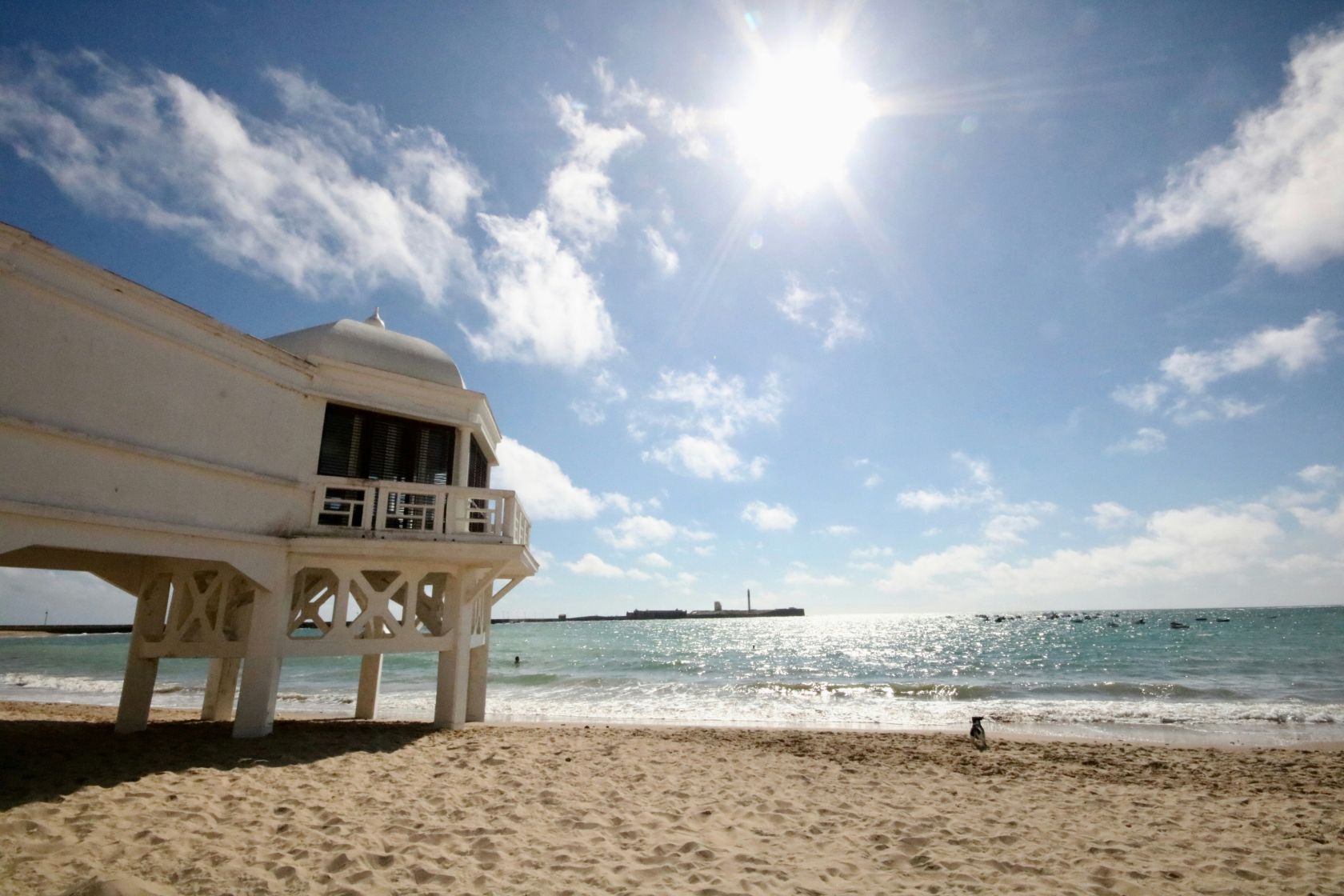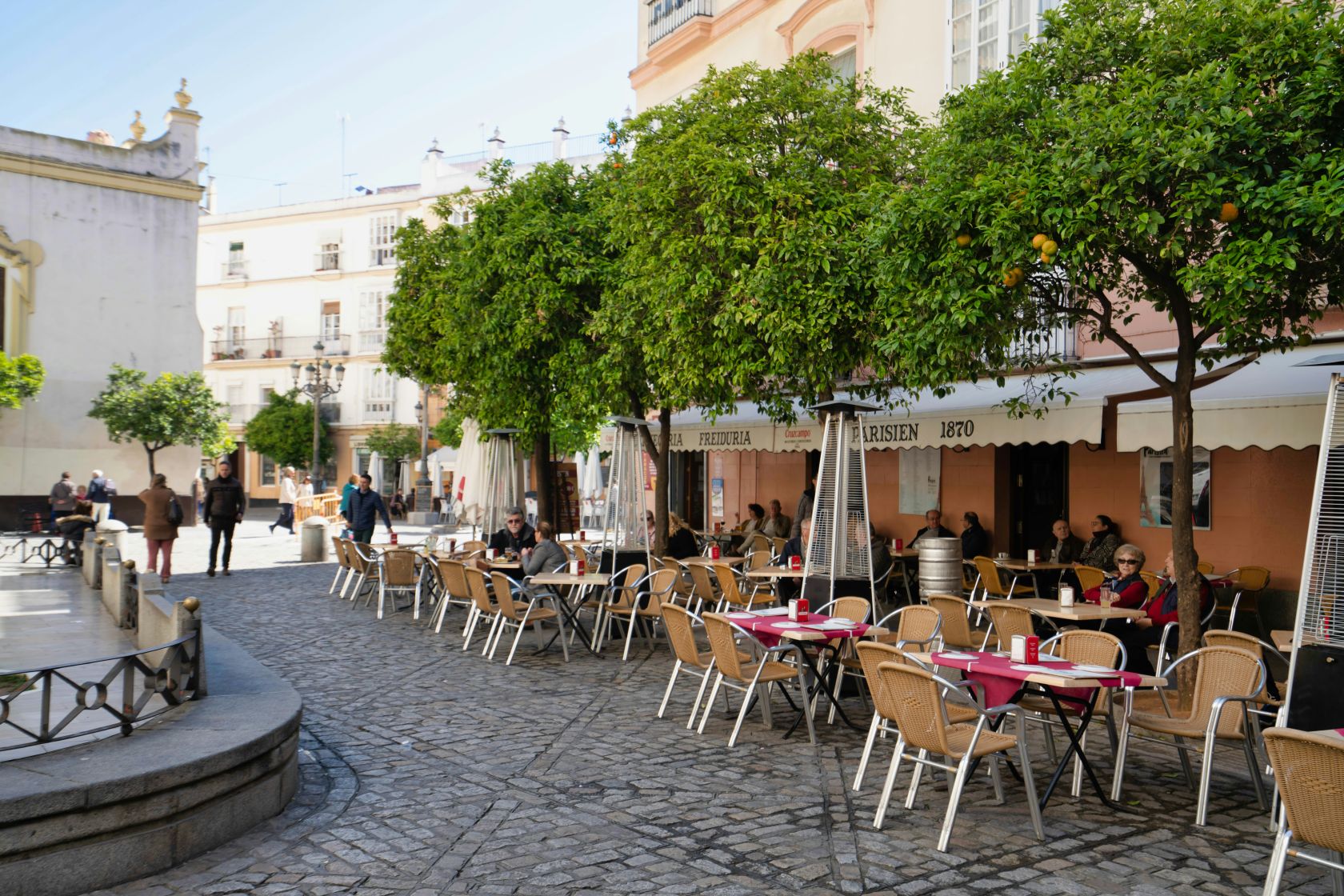It’s a truly delightful city steeped in history, culture and charm. Known for its picturesque beaches, vibrant carnival celebrations and rich maritime heritage, Cadiz offers both visitors and locals alike a unique blend of the old and the new. As a reference point, from Faro, Cadiz is about a 3-hour drive (195 miles).
Historical significance
Cadiz boasts one of the oldest urban settlements in Western Europe, with a history that dates back over 3,000 years. Founded by the Phoenicians around 1100 BC, Cadiz originally served as a trading port and was known as Gadir. The city boasts a strategic location at the junction of the Atlantic Ocean and the Mediterranean Sea. This made it a vital hub for maritime trade. Throughout its history, Cadiz has been inhabited by various civilisations, including the Romans, the Visigoths and the Moors. They each left an indelible mark on the city's architecture and culture.
One of the most significant historical events to occur in Cadiz was the signing of the Constitution of 1812, known as La Pepa, during the Peninsular War against Napoleon. This constitution laid the groundwork for modern democracy in Spain and the event is celebrated every year on March 19 in remembrance of its historical significance.
Today, remnants of Cadiz’s rich history can be seen in its well-preserved architecture, including the impressive Cadiz Cathedral, a Baroque and Neoclassical masterpiece built between 1722 and 1838. There is also the 18th-century Torre Tavira, the highest point in the city which offers panoramic views of the surrounding area.
Cultural Essence
Cadiz is renowned for its vibrant and colourful culture. Perhaps the most notable aspect of its cultural identity is the Carnival of Cadiz, one of the largest and most famous carnivals in all of Spain. Held in February or March, this exuberant event draws thousands of visitors to the city for a week of parades, music and festivities. Participants don elaborate costumes and masks and the sound of (satirical musical groups) fills the air with humour and social commentary.

In addition to its carnival, Cadiz is known for its flamenco, an art form that has deep roots in Andalusian culture. The city hosts numerous venues, known as tablaos, where visitors can experience authentic flamenco performances. The annual Flamenco Festival showcases some of the best talents in the region, inviting both local and international artists to share their art.
Cadiz’s arts scene is vibrant and diverse, with galleries and exhibitions that feature contemporary art as well as traditional crafts. Street art has also become a significant part of the city’s identity, with murals adorning buildings throughout the neighbourhoods, adding colour and life to the urban landscape.
Culinary delights
It would be criminal to visit Cadiz without indulging in its culinary treasures. The city is celebrated for its seafood, thanks to its prominent coastal location. Fresh fish, shellfish and other local ingredients play a starring role in the city’s gastronomy. One of the most iconic dishes is pescaíto frito, a mixture of small fried fish typically served with a simple squeeze of lemon. Another must-try delicacy is tortillitas de camarones which are shrimp fritters that showcase the region’s unique flavours. Many of these dishes can be sampled in small bars and cafes dotted around the Mercado Central, Spain’s oldest covered fresh market.
Cadiz is also famous for serving sherry produced in the nearby Jerez region. Sherry bars known as tabernas are popular gathering spots for locals and tourists alike. These are places where we can sample a variety of sherries, from the dry ‘fino’ to the sweet ‘Pedro Ximénez’. Pairing these wines with tapas creates a highly unique and interesting culinary experience that highlights the city’s rich flavours and traditions. This is the absolute highlight for me.

Natural Beauty
Quite apart from its delicious food and drink, Cadiz is also blessed with stunning natural landscapes, combining the charm of the ancient city with the allure of beautiful beaches. La Victoria Beach, located near the historical centre, is known for its golden sands and clear waters, making it a favourite spot for both relaxation and watersports. Meanwhile, La Caleta Beach is a much smaller and more intimate beach, perfect for enjoying picturesque sunsets and soaking in the local ambience.
The city’s coastal parks, such as Parque Genovés, offer lush gardens and scenic views of the ocean. These green spaces provide a serene escape from the bustling streets and are ideal for leisurely walks or picnics.
Just a short drive from Cadiz lies the Doñana National Park, a UNESCO World Heritage site. This natural reserve is famous for its diverse ecosystems, including wetlands, sand dunes and shady pine forests. It is home to numerous bird species and a wide variety of wildlife, making it a haven for nature enthusiasts.
Practical considerations
If by now you’re planning a visit to Cadiz, it’s essential to consider the best times to experience the city. The spring months (April to June) and autumn months (September to October) offer pleasant weather and far fewer crowds, making it ideal for sightseeing and outdoor activities. Of course, summer is peak tourist season and while the beaches are at their beautiful best, the city can get very crowded, particularly during carnival time.
Getting around Cadiz is relatively easy due to its compact size. The city is pedestrian-friendly, allowing visitors to explore on foot. Biking is also a popular option with rental services available throughout the city. Public transport, including buses, connects various neighbourhoods and nearby attractions.
Accommodations in Cadiz range from grand luxury hotels to cosy guesthouses and hostels, catering for a variety of budgets. Staying in the old town allows visitors to immerse themselves in the rich history and culture, with many of the city's attractions being within easy walking distance.
Summary
Cadiz is a city that encapsulates the unique essence of beautiful Andalusia, with its rich history, vibrant culture, delectable cuisine and stunning natural landscapes. Whether you are wandering through its ancient streets, soaking up the sun on beautiful beaches or simply lapping up the city’s lively atmosphere, Cadiz offers an unforgettable experience and comes highly recommended.
As one of Spain’s oldest cities, Cadiz remains a testament to the enduring spirit of its people and the charm of its heritage. A visit to Cadiz is not just a journey through time; it is an exploration of life in its most colourful, flavourful and beautiful form. It's a thumbs-up from me!
Douglas Hughes is a UK-based writer producing general interest articles ranging from travel pieces to classic motoring.















